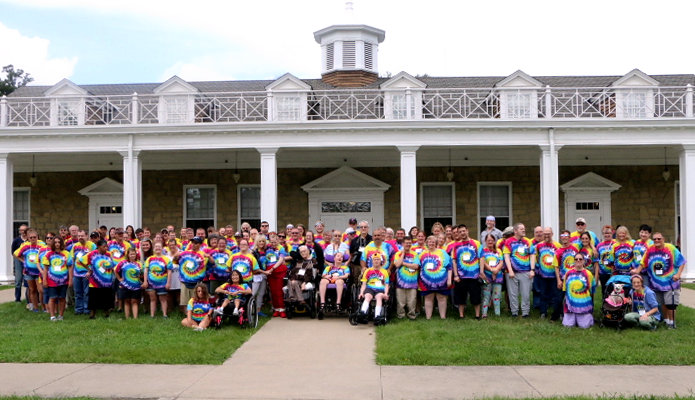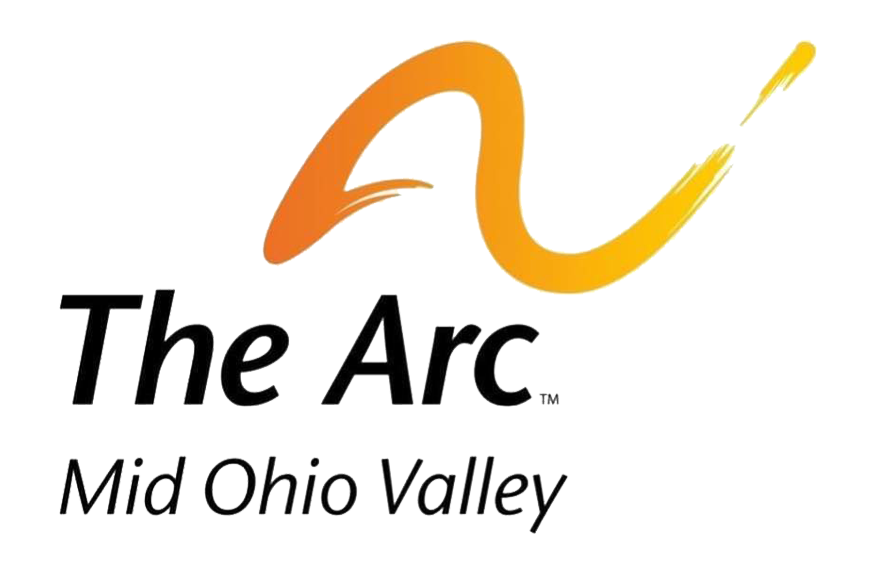
People First Chapters
We are individuals with developmental disabilities joining together to speak up and speak out for ourselves!
Our mission is to promote self-advocacy by speaking and acting on behalf of the rights and responsibilities of all people with developmental disabilities.
Nine Beginning Steps To Starting A Chapter
1. Make sure that everyone understands what People First and self-advocacy are. Talk about why people want to meet as a group. Write it down. This is your mission statement. It is important that the members of the chapter have control right from the beginning, so that the group belongs to the members. Starting a group takes time, so that everyone will understand what is going on and can participate in starting the group.
2. Decide on the responsibilities that each person will have in getting the group going. Things that need to be decided are: finding a place to meet, finding transportation, publicity, the agenda, etc.
3. Find out how other groups work, and learn from them. Then make your own decisions about how your group wants to arrange things.
4. Decide on the rules for how you are going to work together. Things like how you will choose officers, if you will have dues, how you will vote, how you will choose an advisor. Write down what you decide. These are your bylaws. We have put the bylaws of one local People First chapter in this manual for you to look over, to get some ideas.
5. Work on developing team spirit. Work on how you will help people get over their hurt feelings when people have disagreements in the group.
6. Decide on the goals your People First chapter has. Write them down. This is the “goals” section of your strategic plan.
7. Decide on what you will do to reach your goals. Write this down too. It is your list of activities.
8. Develop connections with the local community. Be active and interact with others, both groups and individuals in the community.
9. Every so often, stop, and think over how things are going. Make changes when most of the members agree that something needs to be changed.
source: http://oklahomapeoplefirst.org
Running a Chapter
After a group has been started, you need to think about how to keep the group going. All groups have “ups” and “downs.” All groups will have problems at times. One of the most important things to keep a group going over time is to face problems head on. Problems don’t just go away on their own – you have to face them head on and try to work them out. When your group has problems, remember to give people a chance to grow and change.
Most people have never had the experience of being part of a self-advocacy group where they get to make the decisions and solve problems on their own. Sometimes, it is hard to be a self-advocate, and people need time and understanding to work out problems and grow as a group. Below are the ideas that the conference participants came up with on how to support a self-advocacy group over time and keep it going.
In starting and supporting a self-advocacy group, it is important for the members to learn and use a process for working together and getting things done. It is also important for self-advocates to be responsible for teaching others the process, to assume leadership roles, and to be in control of the goals that the group develops by working together.
During all of this, the self-advocacy group must be able to include people with a wide range of disabilities so that everyone can participate and be a valued group member.
Starting and supporting a successful self-advocacy group is a process that takes lots of careful planning and thinking. Members and advisors must work together to establish a strong foundation so the group will continue to grow stronger. Below is a list of steps that self advocates and advisors typically use and go through in order to have successful self-help/self-advocacy groups. Some of these processes are described by Norsman in Patterns of Participation, and others have been identified by self-advocacy groups as they have started up.
Always have officer meetings.
Officer meetings are a good time to learn about leadership, talk about and solve problems the group is having, and work with the advisor. If an advisor does a good job in the officer meetings, then the officers can run the membership meetings on their own. An officer meeting should be about one week before membership meetings, to give people a chance to learn and practice their duties and to make sure everything is ready for the membership meeting.
Make the discussion in the meetings real.
By real, we mean that the discussions must be about things that are important to the members. Each group has to decide what is real and important to them. If you keep the discussions real, and on things that are important to the members” lives, then people will want to come to the meetings and take part.
Set up some committees when you plan to do things.
Committees are a good way to get everyone involved, plan things, and get things done. Committees give everyone a chance to have responsibilities and feel like an important part of the group.
Make sure there is a place and something for everyone at the meetings.
It is important for everyone to have something to say at the meeting and a way to feel that they are an important part of the group. The best way to keep people involved is for everyone to have an important part in the group.
Plan some fun things together.
Don’t make the meetings all “hard work.” Go out and eat together, go on a camping trip together, do fun things together. Find things to do together that build “team spirit.” Don’t let the meetings get boring.
Some Steps That Can Be Used to Have Successful Self-Advocacy Groups
Make sure everyone understands why a group of people would want to meet. The group should ask, “Is there a need for a self-advocacy group? Why would people with disabilities want to get involved?”
Find out how other similar groups got organized and how they operate – learn from others’ experience.
Arrange for the details of organization. That is, when and where to meet, publicizing the group to attract broader interest, transportation, refreshments, introductory presentations, films, video-tapes, speakers from similar groups, etc.
Decide on how the group members will work together (rules, officers, agendas, voting, etc.)
Develop a working friendship between the members and develop “team spirit.”
Develop ways (strategies /tactics/methods) to reach goals.
Develop connections/links and “allies” between the group and the community to increase the presence and participation of the group and group members in community life and decision making.
Work on ways to decide how well the group is doing, and how to make changes to help the group move forward.
Develop a process to decide how the group will change and expand over time (coalitions, state organization, etc.).

